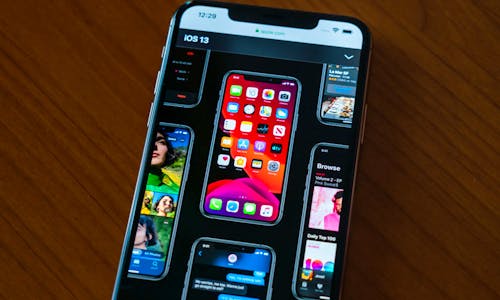The Nokia E7 is its latest slide-out keyboard phone, a smartphone packed with Symbian.
Taking the body shape and several other design cues from the Nokia N8, and a keyboard not too dissimilar to the year-old N97, how does Nokia’s latest stand-up against its Android rivals and Apple’s champion?
What we like
Like every slide-out keyboard phone, you have two ways of using the phone. Keep the keyboard in and there’s a capacitive touchscreen. The screen itself is a rare non-Samsung AMOLED display , which looks great.
Webpages pop out from the screen, and watching video is a joy. The E7 is also HDMI compatible, which means you can send up video files, pictures, and even streaming video to a larger screen.
The phone-body is reliably solid, and, it has to be said, the sliding mechanism which also raises the screen to a convenient 45-degree viewing angle, is a joy to use. Although at the start, you may send the phone flying out of your hands at the start attempting to pull the keyboard out, once you get used to it, it really adds to the premium feel of the stainless steel phone.

While Nokia’s home-made Symbian may not be the coolest phone system, it’s established enough to offer the apps you’re most likely to use. Several come pre-isntalled, like BBC iPlayer, YouTube, and Nokia’s own social network app, which can connect to both Facebook and Twitter.
Ovi Maps will help you get where you want to go, and integrates spoken road navigation for those looking to substitute your car nav.
The qwerty keyboard makes a huge difference to your typing speed. Many smartphone users who are turned off my touchscreen typing will find a happy balance here between a keyboard the whole length of the phone and a four-inch capacitive touch screen for internet navigation and other app use.
The battery also performed well during our review, lasting much longer than other rival smartphones. The 8-megapixel camera also takes superb shots, continuing Nokia’s great camera phone pedigree.
What we don’t like?
The Nokia E7 has a HDMI port, is compatible with USB sticks through a USB adapter in the box, has a full size keyboard, an AMOLED screen; yet it still frustates us.
We struggled to get both the BBC iPlayer and Nokia’s social networking features working like they should. During play-pack on the iPlayer, a little window would appear above the video, asking whether we’d like to mute the video, and switch to “normal view.” Whilst it appeared and disappeared, the phone would vibrate consistently, We did, however managed to get the app working again, after several restarts.
To test the social networking features, we needed to factory reset the phone and start again, and the phone repeatedly told us to uninstall and reinstall the Nokia’s own app- something we found impossible to do without starting from square one.

The E7 is very lucky to have its slide-out keyboard, as the on-screen keyboard still hasn’t moved on since the N8. It’s frustrating to use, the slight vibrations of the haptic feedback making it hard to tell what we we were typing, and all punctuation is crammed to a single key which acts like a menu to the grammar goodness.
It’s a digitised version of what we used to use on 12-key candy-bar feature-phone. This may be a reliable feature to people moving across from an ageing feature phone, but it remains painfully slow.
Browsing the web also proves too frustrating for words. The time it takes, even on WiFi, to load content is agonising, and doesn’t hold a candle to even mid-range Android phones from a year ago.
Conclusion
The solid build and very useable keyboard are both things we’ve come to expect from Nokia’s high-end smartphones, as is the (generally) superb performance from its cameras. But Symbian, the stuff it all runs on, is slow, and just doesn’t stand up to other phone’s offerings, like Android and iOS.
This looks to be one of Nokia’s last hurrahs on the Symbian system, with Nokia wholeheartedly supporting Windows Phone 7 on their future smartphones. It’s a shame that it’s more like a small group of four cheering from the back-row.
Specification
| OS | Symbian |
|---|

Leave a Reply